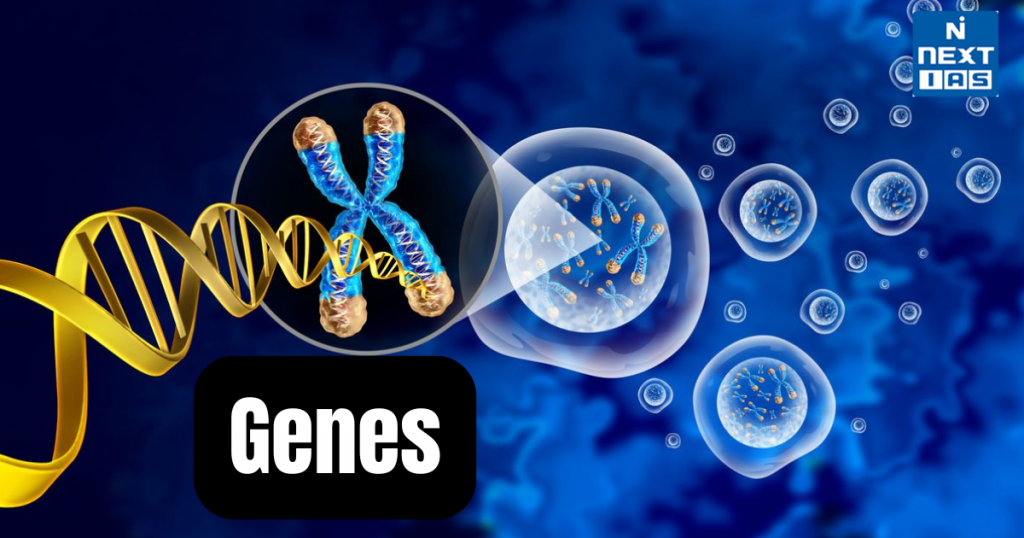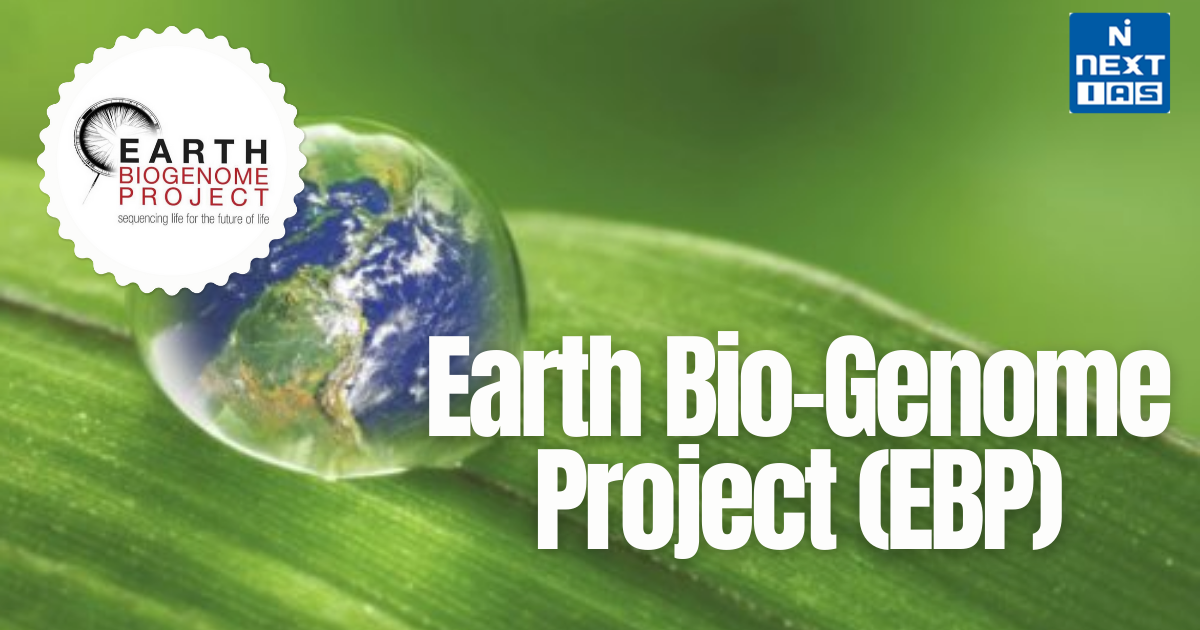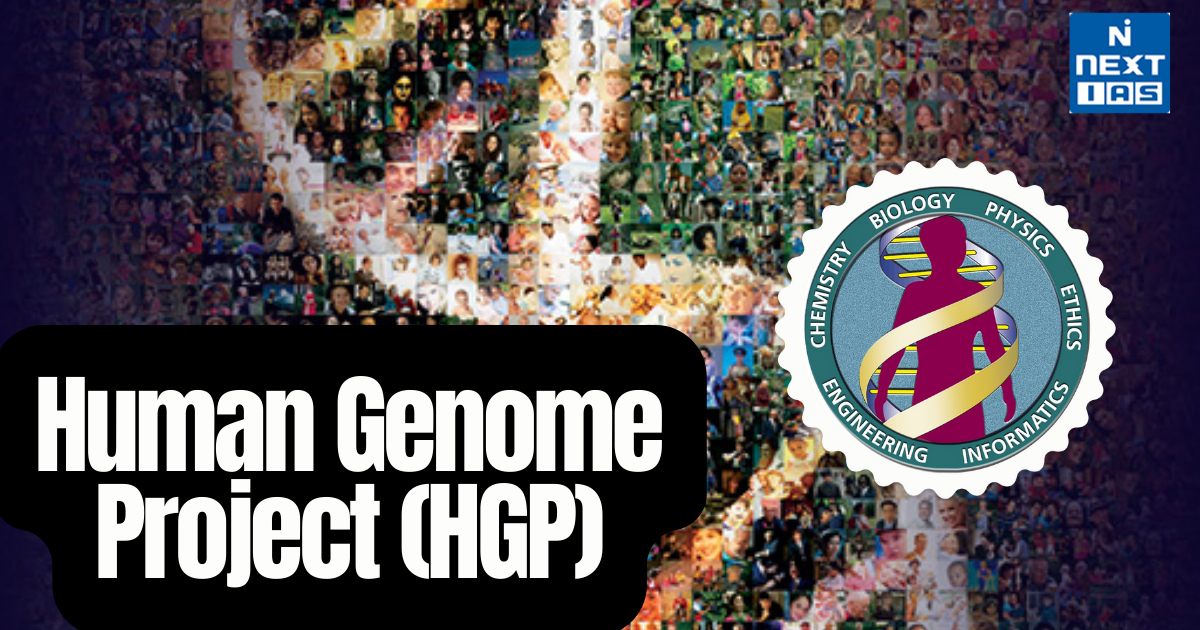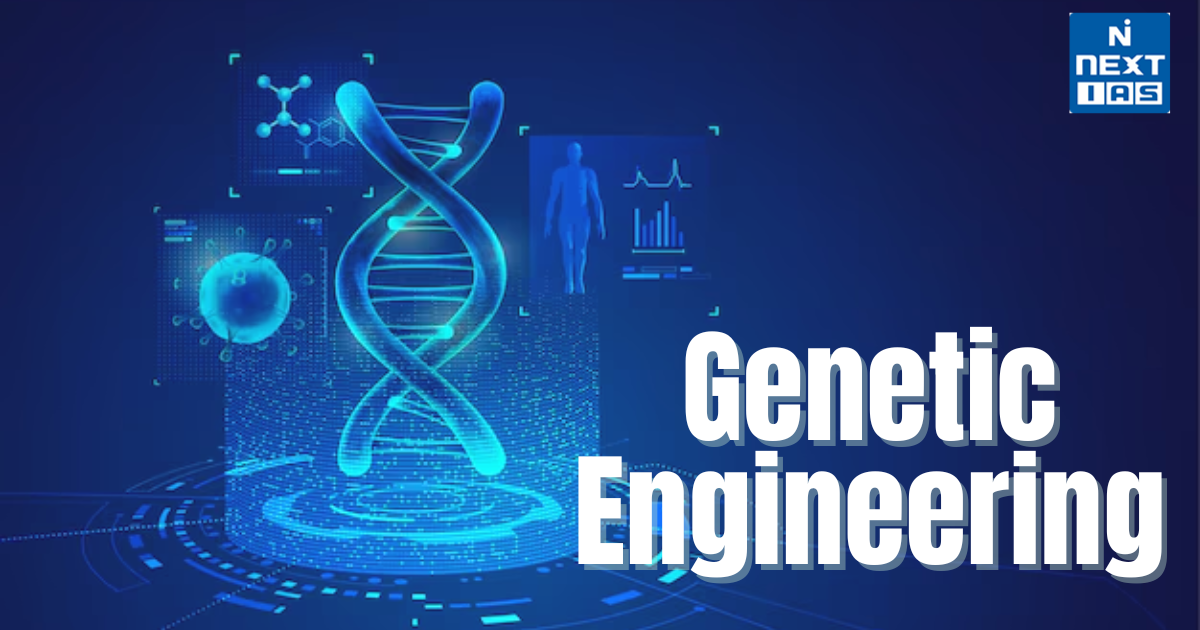
Genes are the fundamental hereditary units made of DNA that carry the instructions for the development and functioning of living organisms. The understanding of genes will thus allow unlocking the mysteries behind inheritance, genetic variation, and future possible applications in medicine and biotechnology. This article intends to study the structure and functions of genes, their role in heredity and variation, and the importance of genetics in explaining biological phenomena.
What are Genes?
- Genes are functional units of heredity as they are made of DNA. The chromosome which contains many genes is made of DNA.
- Each gene has the particular set of instructions for some specific function or protein coding. In common language terms, genes are responsible for hereditary traits.
- There are nearly 30.000 genes in each human body cell; yet, the DNA existing in every gene makes up only 2percent of the genome.
- Several investigations have been carried out, and most chromosomes have been determined to be the site for almost 13000 genes.
- William Bateson first coined the term genetics in 1905. Later, in 1909, the term GENE was coined by the Danish botanist Wilhelm Johannsen. He named it Gene to represent heredity.
Characteristics Determined by Genes
- The human cell contains 23 pairs of chromosomes. A trait is one of the characteristics determined by one or more genes.
- Some traits may also result from abnormal genes or genes formed as mutations anew.
- A gene varies in size according to the code or protein it creates. The same DNA is found in all the cells of the human body.
- Cells differ because different types of genes turn on to produce various types of proteins.
Functions of Genes
- Genes control the functions of DNA and RNA.
- Proteins are considered the most essential raw materials in the human body. They develop muscles and connect tissue and skin and produce enzymes.
- These enzymes are essential for many chemical activities and for chemical reactions throughout the body.
- Displacement through protein synthesis is hence involved in all bodily activities; most of these activities are controlled by genes.
- Genes are therefore specific instructions or functions. For example, the globin gene is instructed to produce haemoglobin, a protein that carries oxygen through the blood.
What are Genetics?
- In the broader sense, genetics has to do with the study of the genes—trying to say what a gene is and how it works.
- Genes are how traits get from an organism to its ancestors; thus, since children get their genes from their parents, the genes determine their looks.
- Genetics tries to decipher which characteristic gets transferred to another generation and how it is passed down.
- Molecular Biology is the study of the composition, structure, and interaction of cellular molecules such as nucleic acids and proteins-the molecules that conduct biological processes necessary for cell functions and maintenance.
- The European Federation of Biotechnology defines Biotechnology as goes “The integration of natural science and organisms, cells, parts thereof and molecular analogues for products and services”.
- Biotechnology involves techniques related to the use of living organisms or enzymes derived from organisms to produce products and processes of human use. Human applications include in-vitro fertilisation to give rise to a ‘test-tube’ baby, synthesising and using a gene, developing a DNA vaccine, or gene therapy for correcting a defective one.
Functions of Genetics
- Genetics is a branch of biology that studies heredity and its biological processes, genes, genomes, cell cycles, heredity, inheriting genes, and much more.
- Genetics is the exploration of the working and major codes of variation and heredity.
- The foundation of heredity is inheritance, which is defined as the procedure by which characteristics are passed down from one generation to the next.
- Gregor Johann Mendel is known as the “Father of Modern Genetics” for his discoveries on the basic principles of heredity.
- Variation, as the name suggests, is the dissimilarity between children and their parentages.
- It can be determined to keep in view the behaviouristic, cytological, physiological, and morphological characteristics of individuals fitting into similar species. Some of the significant reasons for variation are:
- Genetic/Chromosomal rearrangement.
- Mutated genes due to the influence of the ecosystem.
- Crossing over.
- gene silencing
| Deoxyribonucleic Acid (DNA) is the hereditary material in humans and almost all other organisms. Nearly every cell in a person’s body has the same DNA. Most DNA is located in the cell nucleus (which is called nuclear DNA), but a small amount of DNA can also be found in the mitochondria (which is called mitochondrial DNA or mtDNA). |
| Ribonucleic Acid (RNA)is one of the three major biological macromolecules essential for all known life forms (along with DNA and proteins). RNA is important in regulating cellular processes–from cell division, differentiation and growth to cell ageing and death. Phenotype refers to all the observable characteristics of an organism that result from the interaction of its genotype (total genetic inheritance) with the environment. Observable characteristics include behaviour, biochemical properties, colour, shape, and size. Chromosome: DNA is tightly coiled to make a thread-like structure called a Chromosome. Human beings have 46 chromosomes (23 from each parent). The chromosome is the microscopic thread-like part of the cell that carries hereditary information in the form of genes. Nucleotide: A nucleotide is an organic molecule that is the building block of DNA and RNA. Genes: A gene is a ‘specific’ section of DNA. It makes RNA (transcription) or protein (translation). Gene pool: A gene pool collects different genes within an interbreeding population. Enzymes: Biological molecules, usually proteins responsible for thousands of metabolic processes essential to life. |
Comparison of DNA and RNA
DNA and RNA are used to store genetic information, so there are clear differences between them. The following table summarises the key points:
| Comparison of DNA and RNA | ||
|---|---|---|
| Comparison | DNA | RNA |
| Function | Long-term storage of genetic information; transmission of genetic information to make other cells and new organisms. | Used to transfer the genetic code from the nucleus to the ribosomes to make proteins. RNA is used to transmit genetic information in some organisms |
| Structural Features | B-form double helix. DNA is a double-stranded molecule consisting of a long chain of nucleotides. | A-form helix. RNA usually is a single-strand helix consisting of shorter chains of nucleotides. |
| Composition of Bases and Sugars | Deoxyribose sugar-phosphate backbone Adenine, Guanine, Cytosine, and Thymine bases | Ribose sugar; Phosphate backbone; Adenine, Guanine, Cytosine, Uracil bases |
| Propagation | DNA is self-replicating | RNA is synthesised from DNA on an as-needed basis. |
| Base Pairing | AT (Adenine-Thymine); GC (Guanine-Cytosine) | AU (Adenine-Uracil); GC (Guanine-Cytosine) |
| Ultraviolet Damage | DNA is susceptible to UV damage. | Compared with DNA, RNA is relatively resistant to UV damage. |
Conclusion
In conclusion, genes are an essential part of the biological processes occurring in living organisms that show manifestation by variable traits and susceptibility toward some diseases. It is genetic research that has cast the light around the mechanism of transmission of some traits and has made potential advances in areas such as medicine, agriculture, and biotechnology possible. As more research continues to shed light on the complex nature of genetic information, it opens up even greater potential avenues for the application of genetics toward health improvements and agricultural productivity. Genes and how they work will remain a prime focus of study and research, keeping alive the quest to manipulate life itself.
FAQs
What are genes ?
Genes are units of heredity made of DNA that carry instructions for building proteins, essential for life functions. They determine traits like eye color and height, passing from parents to offspring. Genes influence health, behavior, and evolution, playing a crucial role in genetics and biological diversity.
What are the 4 types of genes?
– Structural genes – Code for proteins that build body structures and enzymes.
– Regulatory genes – Control gene expression by turning other genes on or off.
– Housekeeping genes – Maintain essential cellular functions.
– Proto-oncogenes – Regulate cell growth, but mutations can cause cancer.
What is the concept of genes?
The fundamental unit of inheritance is thought to be the gene. The information required to specify physical and biological features is contained in genes, which are passed down from parents to children. The majority of genes produce certain proteins or protein fragments with a variety of bodily activities.
What is a genome ?
A genome is the complete set of an organism’s DNA, including all its genes and non-coding sequences. It contains instructions for growth, development, and functioning. The human genome has about 3 billion DNA base pairs. Genomics studies genomes to understand heredity, evolution, and disease mechanisms for medical advancements.
Where are genes located?
Genes are located on chromosomes inside the nucleus of a cell. Chromosomes are made of DNA, which carries genetic information. Some genes are also found in mitochondria, known as mitochondrial DNA. These genes control traits, cellular functions, and heredity, passing from parents to offspring through reproduction.
What is gene mutation?
A gene mutation is a permanent change in the DNA sequence of a gene. It can occur due to errors in DNA replication, environmental factors, or inherited conditions. Mutations may be harmless, beneficial, or harmful, leading to genetic disorders, cancer, or evolution by introducing new traits in organisms.





